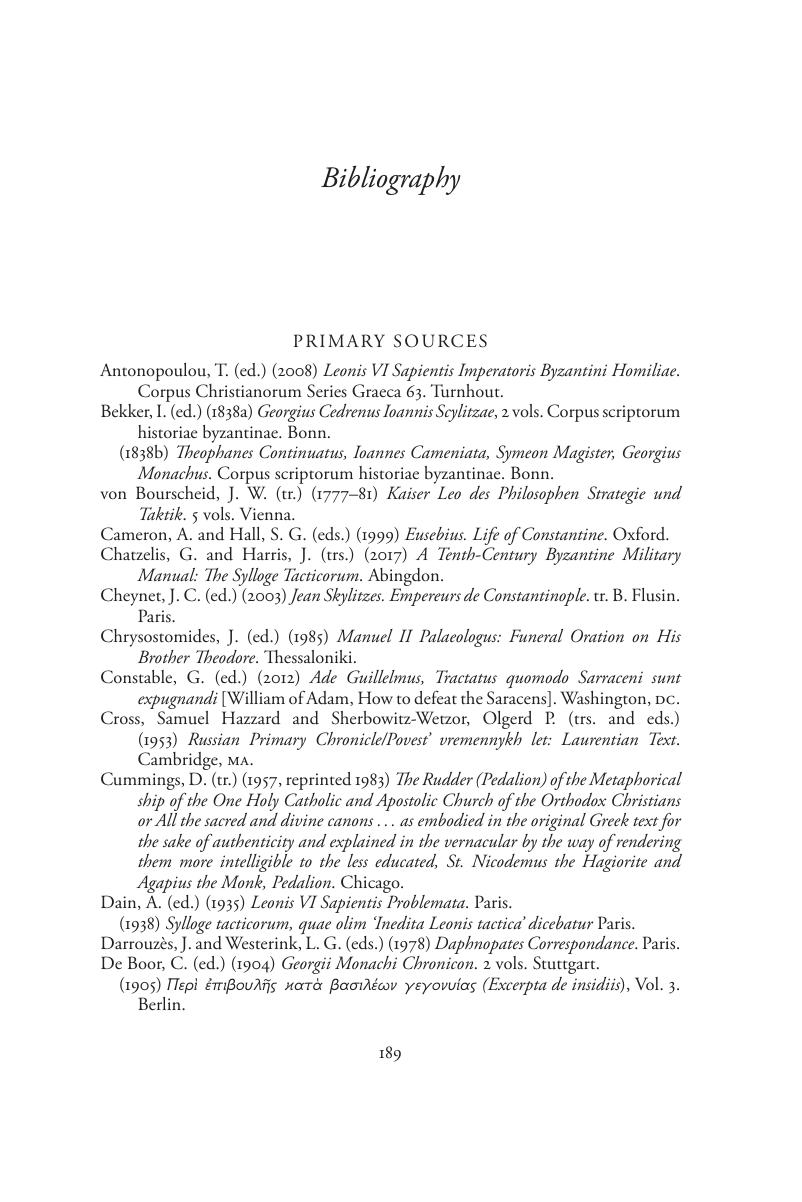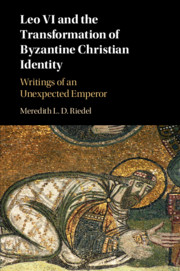Book contents
- Leo VI and the Transformation of Byzantine Christian Identity
- Leo VI and the Transformation of Byzantine Christian Identity
- Copyright page
- Contents
- Foreword
- Preface
- Chronology
- Chapter 1 The Reign of Leo VI
- Chapter 2 Romans Imitating Saracens?
- Chapter 3 The Byzantine Christian Approach to War
- Chapter 4 The Ideal Christian General
- Chapter 5 A New Solomon
- Chapter 6 Imperial Sacrality in Action
- Chapter 7 Leo VI as Homilist
- Chapter 8 Byzantines as ‘Chosen People’
- Chapter 9 Byzantine Christian Statecraft
- Bibliography
- Scripture Index
- General Index
- References
Bibliography
Published online by Cambridge University Press: 04 August 2018
- Leo VI and the Transformation of Byzantine Christian Identity
- Leo VI and the Transformation of Byzantine Christian Identity
- Copyright page
- Contents
- Foreword
- Preface
- Chronology
- Chapter 1 The Reign of Leo VI
- Chapter 2 Romans Imitating Saracens?
- Chapter 3 The Byzantine Christian Approach to War
- Chapter 4 The Ideal Christian General
- Chapter 5 A New Solomon
- Chapter 6 Imperial Sacrality in Action
- Chapter 7 Leo VI as Homilist
- Chapter 8 Byzantines as ‘Chosen People’
- Chapter 9 Byzantine Christian Statecraft
- Bibliography
- Scripture Index
- General Index
- References
Summary

- Type
- Chapter
- Information
- Leo VI and the Transformation of Byzantine Christian IdentityWritings of an Unexpected Emperor, pp. 189 - 210Publisher: Cambridge University PressPrint publication year: 2018



